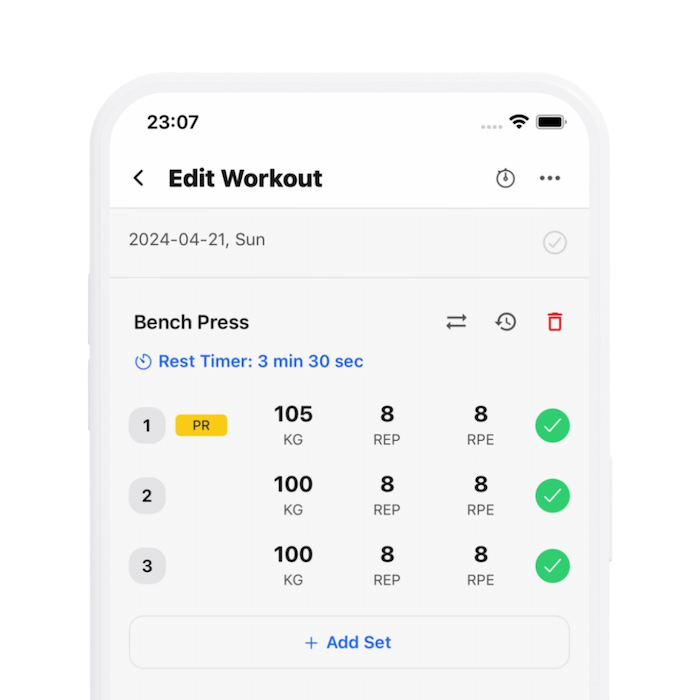30 Seconds SummaryThe Best Way To Use Velocity Based Training
- Velocity Based Training (VBT) quantifies the speed of each repetition using devices like linear position transducers to measure displacement and velocity.
- VBT can help remove subjectivity in measuring training intensity, indicating proximity to failure by the slowing of lifting velocity which is crucial for strength and hypertrophy.
- Past applications of VBT include determining daily loads using first rep velocity, setting termination points for sets, and optimizing rest intervals between sets.
- Over time, the practical, day-to-day use of VBT has presented logistical challenges and inconsistencies, such as changes in individual performance profiles and intraset fatigue patterns.
- Despite its potential, there is considerable setup involved in VBT, requiring frequent updates to load/velocity profiles and complex data management, which may outweigh its benefits over simpler methods like RIR (Reps In Reserve).
- Research suggests subjective autoregulation methods (like RIR) might lead to greater improvements in strength compared to VBT, although VBT does offer certain advantages.
- Advantages of VBT include improving training quality by encouraging maximum effort in each repetition and providing immediate performance feedback, which has been shown to enhance both acute and long-term performance.
- Though often underutilized in prescriptive settings due to its complexity, VBT can effectively serve as a descriptive metric to monitor long-term performance enhancements, especially in advanced lifters.
Data Driven Strength
Zac Robinson
